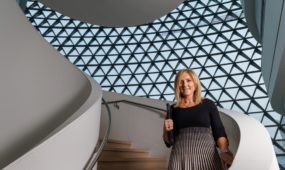Hi-tech tool opens up 3D classrooms
Education
A DEFENCE and security company is developing hologram applications to help with virtual education and training.

Sign up to receive notifications about new stories in this category.
Thank you for subscribing to story notifications.
Saab Australia, which is based in Adelaide, South Australia, has partnered with Microsoft to build a range of training, education and other complex 3D Holographic applications for HoloLens.
Worn as goggles by users, Microsoft HoloLens is the first fully untethered, holographic computer, enabling interaction with high‑definition holograms.
Managing Director of Saab Australia Dean Rosenfield said the company’s Training and Simulation team in Adelaide was already working on a range of civil and military applications in training, simulation and education.
“Mixed Reality technology is truly ground breaking and will revolutionise the way we train, educate and operate across the whole of society,” he said.
The Adelaide studio will initially be the only one in Australia and the near region with the necessary skills and expertise to develop high-end HoloLens applications.
Saab Australia Head of Training and Simulation Inger Lawes said the HoloLens applications were ideally suited to supporting long distance education. He said Saab planned to build a family of applications that enabled complete education packages to be deployed on the device.
The devices, complete with self-contained education packages, could then be sent to trainees or students in remote locations.
“What is really neat is that each of these paired HoloLenses can talk to other HoloLenses so they do end up talking to each other,” Lawes said.
“At the moment the computer-based training that’s delivered is fantastic but the children still miss that very direct and personal human contact that HoloLens can offer.
“When Microsoft talk about transforming the world with this device it’s a lofty ambition but I can see education being transformed.”
The company is also looking to develop HoloLens applications to support training that would be undertaken in very hazardous environments such as de-mining operations.
Lawes said the technology was capable of accurately simulating the complexities involved in locating and disarming unexploded ordnance in a completely safe way.
“A year or so ago we came across Microsoft’s work with holograms and specifically HoloLens and pretty quickly saw that this was a piece of technology that had the potential to revolutionise the way that training can be delivered but also a whole range of other things we are broadly involved in,” he said.
“We want to produce applications that are at the sophisticated end of what HoloLens can do. For example there are a lot of games on this thing that are a lot of fun but that’s not where we want to be, we want to be at the upper end of what’s possible.”
Lawes said the way to think of HoloLens was as a self-contained, high-end computer with standard features such as Wi-Fi, Bluetooth and USB.
Holographic images are projected onto the goggles’ optical lens and appear in the field of vision about a metre from the user’s eye.
Beyond training and education, Saab will be actively engaged in developing a series applications that will support a number of civil and defence sectors such as advanced manufacturing.
Jump to next article



